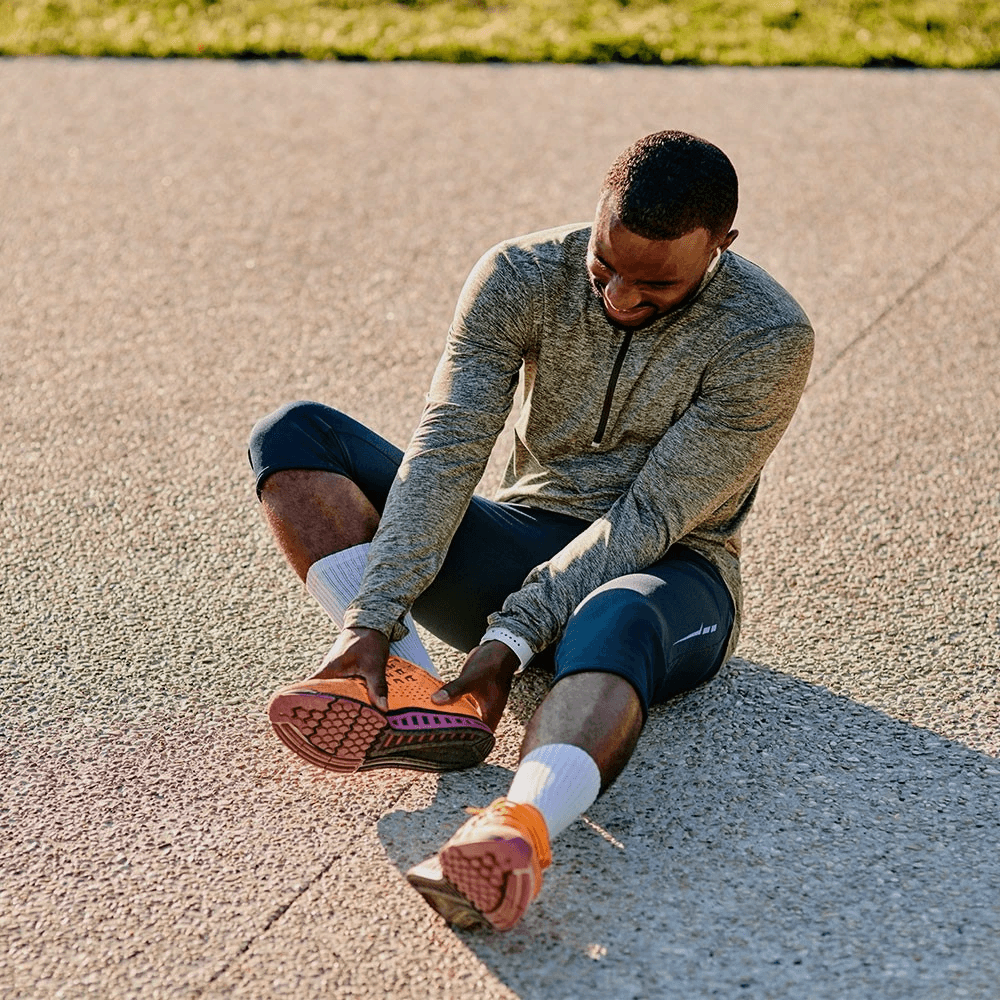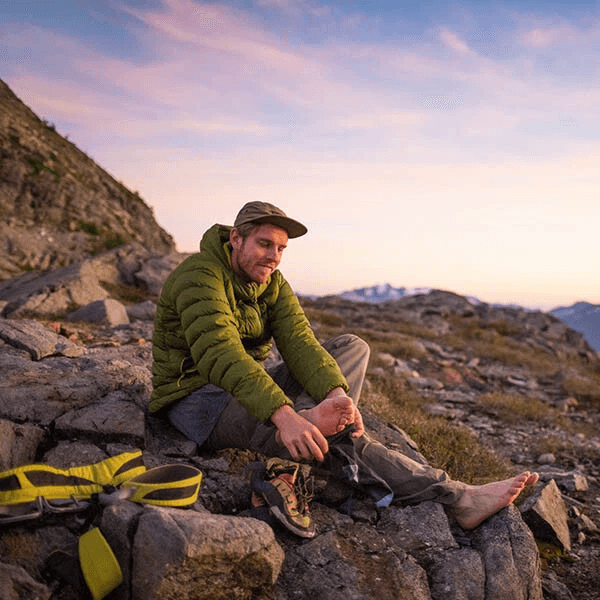The most common type of foot blister for most people is the friction blister. They are those pesky pockets of fluid that form on your foot in the upper layers of skin after too much stress and friction with your shoes. They are formed as the top layer of skin tears away from the tissues below, plasma-like fluid leaks from the cells and begins to fill the gap, cushioning the tissue from further damage.
How To Treat Foot Blisters

Jump to:
Blister Treatment Options

Man putting on comfortable shoes to avoid blisters
Blister FAQs
Blisters are fluid filled lesions that develop in response to repeated friction on the skin. Open blisters can be very painful and take up to 7 days to heal (individual experiences may vary (individual experiences may vary.)
Blisters develop as a result of repeated friction and rubbing, often from tight or ill fitting shoes
Blisters can take several days to heal. Treatments focus on protecting the blister from further friction. Apply a Compeed plaster to prevent further blistering and provide instant pain relief.
If you're wearing shoes that make you more prone to blisters protect your feet from rubbing and friction with Compeed Blister Plasters. You can also prevent blisters by wearing two pairs of thin socks when exercising. Be sure to read our full blister prevention advice.
Blister plasters turning white indicates that they have absorbed excess fluid which aids healing.
You do not need to burst the blister to use Compeed®. If it does open, clean it with mild soapy water, soak it in a saltwater foot bath for 10 minutes and cover with a protective plaster such as Compeed®.
Yes, Compeed® plasters are waterproof. Although contact with water may reduce the adhesion, water will only enter through the edges of the patch, not through the outer film. If the adhesion is reduced, remove the plaster carefully by slowly stretching along the skin and replace with a new one.
Compeed® Blister plasters can be used at the stage when the blister is open, creating a wound. Compeed® will protect from infection, dirt, and water, and creates a moist environment which helps the healing. Compeed® should be applied after the wound has been cleaned and dried.
Enjoying this article?
Rate this article if you find this helpful.
